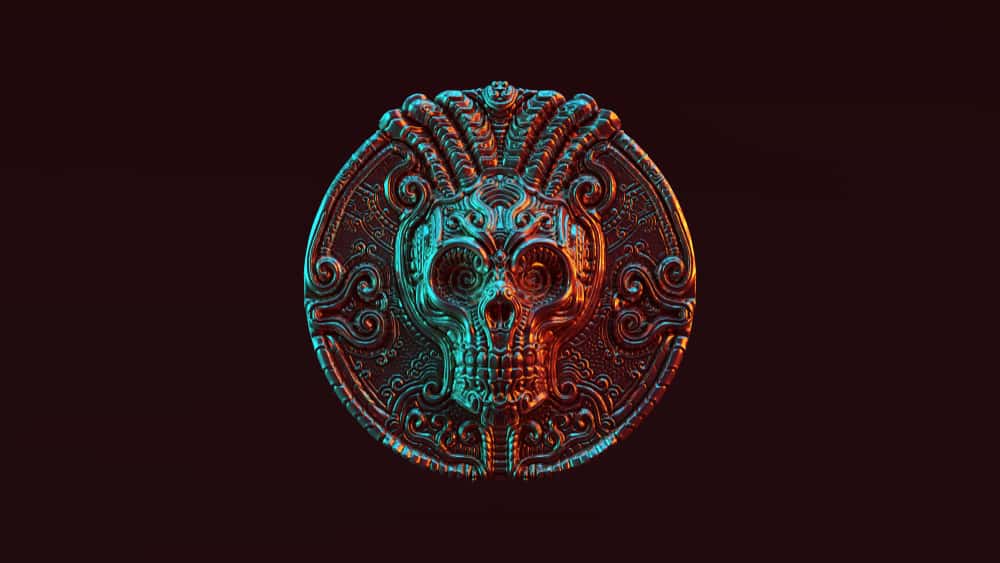
A rising tide can float a lot of boats, but, conversely, when the tide recedes, a lot of rocks can appear strewn about the shore. That particular metaphor seems extremely appropriate when describing the world of cryptocurrencies. When Bitcoin (BTC), the King of Crypto, is rising in value, new token programs proliferate like weeds in a garden, but when the fortunes of BTC falter and fall, a multitude of crypto programs find it hard to gain interest and soon cave in, becoming first a zombie token, which is barely alive, to becoming what is known as a dead coin.
Several coin data aggregator websites try to keep track of active coin programs. Sites like Coinmarketcap, CoinGecko, and Statista broadcast a peak in early 2022 of just over 10,000 programs, but as Bitcoin values continued to plummet, this figure declined by roughly a thousand programs, the largest drop off since BTC began its crypto journey in 2009. Bitcoin hit an all-time high in November 2021, over $63,000. Today, BTC trades at $16,616. From another perspective, the total market cap of all crypto programs peaked at just under $3 trillion. It now rests at just under $800 billion. Perhaps, a second, more severe Crypto Winter is afoot.
Many programs never get past the stage of private investors being traded on a legitimate exchange. Even if a program is listed on the blockchain, it does not mean that it is actively traded. In fact, Coinmarketcap.com purports that over 22,000 programs exist today, but a majority of these may still be a figment of the imagination of a hopeful software programmer determined to change the world. When BTC began to fly high, CoinGecko recorded more than 8,000 newly minted programs, but over 40% of these were deactivated or removed from active listings.
Corporations, banks, and investment houses may have finally recognised the financial benefits of blockchain technology, but viable applications with major support and widespread adoption are, unfortunately, relatively few. To make matters worse, the crypto industry is still incurring enormous losses due to hacking schemes that stole hundreds of millions of dollars worth of tokens and cash from highly visible programs. 2022 has witnessed several of these attacks on such programs as FTX and BlockFi. Panic liquidations at TerraClassicUSD, a stablecoin pegged to the US Dollar and thought to be secure, caused $60 billion in investor losses.
It is no wonder that investors might be a bit edgy when it comes to newer programs when scams, fraud, and mismanagement prevail. In times like these, firms begin compiling lists of token programs to be avoided at all costs due to bad press, fictitious management teams, immediate liquidation of funding proceeds, and a host of other shady business practices. In the article to follow, we will cover a dead coins list of the most infamous coin programs on record and why each program failed to deliver on its promise.
What Are Dead Coins?
In cryptocurrency vernacular, a Dead Coin is any coin program that has ceased to exist. According to one website’s recently updated list, there are 1,719 dead coins in the crypto realm. These programs have garnered this status for a variety of reasons, such as no longer being sold or traded, no longer proceeding with development efforts, being shut down due to hacking compromises or scams, absentee management with poor plans, and several other actions that could lead to bankruptcy.

The Most Famous Dead Coins
Without further ado, here is our list of the most famous crypto dead coins for your review:
OneCoin (ONE)
Promoted as a “Bitcoin Killer”, OneCoin entered the crypto fray in 2014, co-founded by Karl Sebastian Greenwood and Ruja Ignatova, acclaimed to be the “CryptoQueen”. Founded in Bulgaria to be a modern Multi-Level Marketing scheme, Ignatova hosted a series of events, filled with Hollywood glitz and held at such prestigious sites as Wembley Arena in London. By 2016, the operation became the largest Ponzi scheme in crypto history. Investors lost over $4 billion. Greenwood has pleaded guilty, but the CryptoQueen disappeared in 2017 and has not been seen since.
BitConnect (BCC)
Unfortunately, BitConnect was another fraudulent scheme built upon the Ponzi model. Its $2 billion collapse shocked investors, but major industry observers warned of its pyramid nature after the project reached a market cap of $2 billion soon after its launch. BitConnect promised high returns for deposits of Bitcoins, a lending ruse promoted by eager multi-level referral agents. The fall from grace happened in 2018.
Gem Coin (GEM)
Steve Chen may have been the first mastermind to conceive of the modern-day Non-Fungible Token (NFT) concept. Chen alleged that his virtual GEM coins would be backed by the actual mining of precious stones by his select mining operation, the U.S. Fine Investment Arts, Inc. (USFIA). Per Chen, as sales from gemstones grew, the corresponding value of GEM coins would follow suit and could be traded on the USFIA platform. The gemstones, however, did not exist. GEM values fell 99.5%, and investors lost $147 million. Chen has pleaded guilty to fraud and tax evasion charges.
PayCoin (XPY)
An early failure in the crypto world, PayCoin was hyped by its founder, Josh Garza, accompanied by the GAW mining group, to be an upgraded and far superior version of Bitcoin, using advanced blockchain techniques to revolutionise the crypto payment space. The heavy marketing effort resulted in an astounding market cap of $115 million in its first 48 hours of business. The program was never able to live up to its lofty expectations, forcing Garza to change course and lose support. The courts ruled that PayCoin was a fake Ponzi scheme. Garza was sent to prison for his fraudulent efforts.
Related Articles
Decentralized Autonomous Organization (DAO)
Greeted by enthusiastic investors, DAO was supposed to be the dawn of contracts without a need to trust humans in the process. The code for the effort led to the largest crowdfunding project at the time. It raised $150 million, but a severe problem arose. Hackers found a hole in the Ethereum-based DAO smart contract and withdrew $50 million. When the news broke, traders avoided DAO like the plague. Values plummeted.
There are many other famous failures like DOGE and FTX, but these and other similar debacles have attempted to regroup. DOGE and FTX can still be traded, so no “Dead Coin” status for those two programs, at least not yet, but perhaps, they are walking zombies.
Safe Crypto Brokers
The first step to avoiding many of the pitfalls of investing in crypto programs, especially potential zombie tokens and dead coin programs, is to partner with a safe crypto broker. We invest a great deal of time in reviewing the best-of-the-best in the industry, and the table that follows contains a list of crypto brokers worthy of your consideration:
| Broker | Features | Min Deposit | EURUSD Spread | ||
|---|---|---|---|---|---|
 51% of retail CFD accounts lose money
US Clients: No Regulated : Yes 51% of retail CFD accounts lose money
US Clients: No Regulated : Yes
|
|
$50 (varying by Country) | from 1 |
Sign
Up
*Don’t invest unless you’re prepared to lose all the money you invest. This is a high-risk investment and you should not expect to be protected if something goes wrong. Take 2 mins to learn more
|
|
 Your capital is at risk
US Clients: No Regulated : Yes Your capital is at risk
US Clients: No Regulated : Yes
|
|
$500 | From 0.6 pips | ||
|
|
|||||
Cryptocurrencies have taken the investment world and the public by storm since their humble beginnings some 13 years ago, but the industry has also had a very bumpy road due to fraud, scams, shady business practices, and outright mismanagement. Thousands of programs have never gotten off the ground, resulting in a host of zombie tokens and dead coins. To avoid such mayhem, be sure to select a reputable and safe crypto broker. We can help you find one.